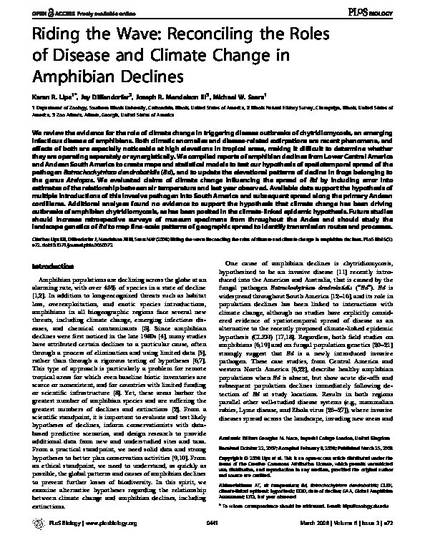
- Biology and
- Life Sciences
Once introduced, diseases may spread quickly through new areas, infecting naive host populations, such as has been documented in Ebola virus in African primates or rabies in North American mammals. What drives the spread of the pathogenic fungus Batrachochytrium dendrobatidis (Bd), which causes chytridiomycosis, is of particular concern because it has contributed to the global
decline of amphibians. We modeled the spatiotemporal pattern of the loss of upland amphibian populations in Central and South America as a proxy for the arrival of Bd and found that amphibian declines in Central and South America are best explained by Bd spreading through upland populations; we identified four separate introductions of Bd into South America. Climate change seriously threatens biodiversity and influences endemic host–pathogen systems, but we found no evidence that climate change has been driving outbreaks of chytridiomycosis, as has been posited in the climate-linked epidemic hypothesis. Our findings further strengthen the spreading-pathogen hypothesis proposed for Central America, and identify new evidence for similar patterns of decline in South American amphibians. Our results will inform management and
research efforts related to Bd and other invasive species, as effective conservation actions depend on correctly identifying essential threats to biodiversity, and possible synergistic interactions.
